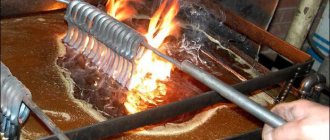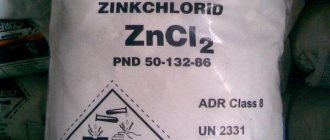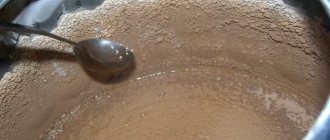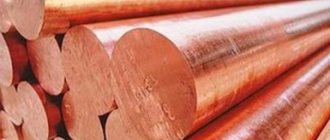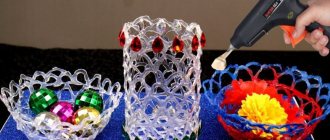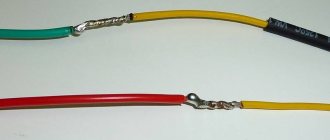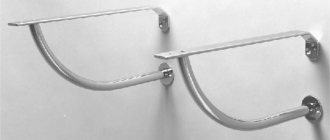Every craftsman who works with metalworking or carpentry tools probably knows how to harden metal at home. It is believed that to do this, it is enough to heat the product until red hot, and then cool it in a container of water
However, in a home workshop, this method can only produce hard and brittle metal, which is quite suitable for chisels and knives, but unsuitable for hammers, punches or chisels. Heat treatment modes depend on the steel grade and the required parameters of the product after hardening, and these include not only hardness, but also strength, wear resistance, ductility and toughness.
In home workshops, as a rule, there are no measuring instruments with which you can find out the temperature of the part. Therefore, in order to harden a part, the boundaries of heating and tempering have to be recognized by the color of the metal or its tarnish.
In addition, before hardening any product, the craftsman must determine (at least approximately) the grade of steel or alloy from which it is made.
Over time, both knowledge and skills accumulate, but a novice thermal engineer, even in order to successfully harden a drill, cutter or some kind of fastener at home, will first have to replenish his theoretical knowledge, communicate with experienced specialists and do several trial hardenings.
Methods for household hardening of metal
To harden a metal product at home, you first need to decide on a method for heating it to the required temperature, and also select containers for coolants.
In addition, you need to choose a home or a place in the yard where you can do hardening in compliance with all safety requirements. Open flame sources can be used for heating. But in this way it will be possible to heat and harden only small parts.
In addition, an open flame causes oxidation and decarbonization, which negatively affect the surface layer of the metal. Home craftsmen, as a rule, determine the heating temperature by the color of the heated workpiece.
The figure below shows a color chart, without which it is impossible to properly harden a carbon steel product. For alloy steels, the temperature range is usually shifted upward by 20÷50 °C.
In order to harden a steel product with complete and uniform heating, it is best to use heat sources such as forges and closed furnaces. This equipment is easy to make yourself in a home workshop, and it can be used both indoors and outdoors.
An industrial hair dryer is usually used to pressurize a forge, and charcoal, which is sold in any supermarket, is suitable as fuel. A small closed oven can be easily made from a couple of dozen fireclay bricks. Moreover, depending on the method of hardening the metal, it is possible not only to harden it, but also to temper it with heating of the entire volume of the product.
The easiest way is with cooling containers and a clamping tool. Any non-flammable vessel of sufficient size will be suitable for the quenching liquid, and the part can be held and moved with tongs or hooks with handles of a suitable length. The video below shows how you can harden an ax at home using a homemade forge and two containers with different cooling media.
Hardening on an open fire
The easiest way to harden a small part at home is to heat it over an open flame to the desired temperature, guided by color tables.
In such cases, you can use a gas burner, a blowtorch, or even a burner on a home gas stove as a heating source. The main disadvantage of such hardening is the difficulty of uniformly heating the product throughout the entire volume, since the flame creates a high temperature in a narrow, limited area.
This method is suitable when it is necessary to harden the end of an elongated product, for example, the cutting part of a drill or a chisel blade, or a small part several centimeters in size.
Another problem that a home craftsman may encounter if he decides to harden carbon steel with an open flame is severe oxidation and burning of carbon in the surface layer of iron, which leads to degradation of its structure.
Technological nuances: how to properly harden metal
The procedure itself includes three steps - heating, holding and cooling. Depending on what result you want to get and what material you are working on, you choose different parameters: limit, duration, and cooling methods. Here is a table with several steel grades:
| Brand | Temperature in degrees | Cooling medium |
| y9, y9a, y10, y10a | from 770 to 800 | water |
| 85khf, x12 | from 800 to 840 | oil |
| hwt | from 830 to 830 | |
| 9xs | from 860 to 870 | |
| xv5 | from 900 to 1000 | |
| 9x5vf | from 1000 to 1050 | |
| p9, p18 | from 1230 to 1300 | saltpeter |
There are two main purposes of heat treatment:
- increasing strength - this is necessary for knives, axes, drills and other tools used to process hard surfaces;
- increasing the plasticity of the product. For example, before forging or bending - it is used not in everyday life, but in a small private business.
When carrying out the heating technology, you should monitor the color of the workpiece. It should be deep red with an orange or yellowish tint depending on the type. There should be no black or other colored spots on the surface.
When carrying out the heating technology, you should monitor the color of the workpiece. It should be deep red with an orange or yellowish tint depending on the type. There should be no black or other colored spots on the surface.
How to properly harden metal and iron if there is no special kiln for firing? Use a blowtorch or make a regular fire - its temperature and burning time are high enough to do work that does not exceed domestic needs.
Cooling can be carried out in various ways. If you urgently need to reduce the heat in one area of the product, you can use a directed stream of cold water. Water, and therefore rapid, cooling is necessary for alloy and carbon steels. After heating, you should take the element with tongs (if it is a small knife, an ax) and place it in a previously prepared container with liquid. When leaving, cool gradually - first with water and then with oil.
And the third option is gradual cooling in the fresh air. This is also an effective method when you need to leave a slight plasticity effect. Let's watch a video on this topic:
Common media for self-heating
For hardening steel at home, the following cooling media are usually used: air, water and aqueous solutions, mineral oil. 10-15% sodium chloride (table salt) is usually used as aqueous solutions, and mineral oil in home workshops is most often used as a regular engine oil.
To harden individual parts of a product with different hardness, hardening with sequential cooling in two environments is used. Each of these quenching media is characterized by its own cooling rate, which directly affects the structure of the metal being processed.
For example, air cools steel at a rate of 5÷10 °C per second, oil - 140÷150 °C, and water (depending on temperature) - 700÷1400 °C.
In order to properly and without problems harden your product, you need to know the brand of metal from which it is made, since both the heating temperature and the cooling method depend on this. For their products, craftsmen most often use used products made from high-speed and tool steels, which can be hardened in a home workshop, as starting materials.
The table below shows the recommended temperature conditions and cooling environments for various steels.
Hardening metal in oil
Oil conducts heat rather poorly, which contributes to the slower formation of structural elements of steel.
Therefore, if it is hardened in an oil environment, it will acquire strength and elasticity along with hardness. In production, industrial oil I-20 or modern quenching oils such as “Thermoyl”, “Thermo” or “Voltex” are usually used for hardening. In home workshops, craftsmen use what is available. Most often this is new or used motor oil.
To safely quench a part in such oil at home, you need to remember that it has a much lower flash point compared to industrial quenching liquids, and when hot metal is immersed in it, it ignites for a short time, releasing acrid smoke.
Therefore, a hardening container used in a home workshop should have a minimal exposed surface and be used only outdoors or in a ventilated area. In addition to ordinary buckets and cans, one of the most common designs of such containers, which are used by home craftsmen, is an elongated section of pipe of a suitable diameter with a welded bottom.
Incomplete hardening of steels
Quenching at temperatures lying between A1 and A3 (incomplete quenching) retains in the structure of hypoeutectoid steels, along with martensite, part of the ferrite, which reduces the hardness in the quenched state and worsens the mechanical properties after tempering. This is understandable, since the hardness of ferrite is 80HRC, and the hardness of martensite depends on the carbon content and can be more than 60HRC. Therefore, these steels are usually heated to temperatures 30–50 °C above A3 (full hardening). In theory, incomplete hardening of steels is not permissible and is considered a defect. In practice, in some cases, incomplete quenching can be used to avoid quenching cracks. Very often this concerns hardening with high frequency currents. With such hardening, it is necessary to take into account its feasibility: type of production, annual program, type of product responsibility, economic justification. For hypereutectoid steels, quenching at temperatures above A1 but below Acm produces excess cementite in the structure, which increases the hardness and wear resistance of the steel. Heating above the temperature Acm leads to a decrease in hardness due to the dissolution of excess cementite and an increase in retained austenite. In this case, the austenite grain grows, which also negatively affects the mechanical characteristics of the steel.
Thus, the optimal quenching for hypoeutectoid steels is quenching from a temperature 30–50 °C above A3, and for hypereutectoid steels – at 30–50 °C above A1.
The cooling rate also affects the hardening result. The optimal cooling medium is one that quickly cools the part in the temperature range of minimum stability of supercooled austenite (in the range of the nose of the c-curve) and slowly in the temperature range of martensitic transformation.
Cooling stages during hardening
The most common quenching media are water of various temperatures, polymer solutions, alcohol solutions, oil, molten salts. When hardening in these environments, several cooling stages are distinguished:
— film cooling, when a “steam jacket” is formed on the surface of the steel;
- nucleate boiling, which occurs with the complete destruction of this steam jacket;
— convective heat transfer.
More details about the cooling stages during quenching can be found in the article “Characteristics of quenching oils”
In addition to liquid quenching media, cooling in a gas flow of different pressures is used. It can be nitrogen (N2), helium (He) and even air. Such quenching media are often used in vacuum heat treatment. Here it is necessary to take into account the fact of the possibility of obtaining a martensitic structure - the hardenability of steel in a certain environment, i.e. the chemical composition of the steel on which the position of the c-curve depends.
Manufacturing a chamber for hardening metal
The main materials for the manufacture of home furnace bodies for steel hardening are solid refractories in the form of blocks of various sizes and fireclay clay.
In such a furnace, a temperature of over 1200 °C is reached, so it is possible to harden products not only from carbon or tool steel, but also from high-alloy steel. When making home stoves from fireclay clay, a cardboard frame is first made according to the shape and size of the working chamber, which is then covered with a layer of fireclay.
A heating coil is wound over it, and then the main heat-insulating layer is applied. With this design, the heating area is isolated from the heating element, which is important when it is necessary to harden steel that is sensitive to oxides and carbon burnout.
The most common design of home hardening furnaces are installations whose thermal bodies are made of fireclay bricks or similar refractories. The operating temperature of such materials is more than 1400 °C, so in such furnaces it is possible to harden almost any type of steel and many refractory alloys.
Structurally, such a home oven is similar to a conventional wood-burning oven, only it is much smaller in size. The metal in it is heated using an electric spiral placed in grooves along the perimeter of the internal space.
If it is necessary to qualitatively harden steel, it must be heated to a precisely specified temperature, so most of these homemade products are equipped with thermostats (they can be freely purchased on Aliexpress).
The video below shows the design of such a home furnace with end loading and a thermostat, which allows you to harden steel with precise temperature conditions. Its thermal body is made of mullite-silica refractory plates ShPT-450.
A detailed description of the design and recommendations for creating a top-loading furnace, in which you can harden products up to 54 cm in length, can be seen in the following video. Here the thermal body of the furnace is made of fireclay bricks (ShB type) and a thermostat is also used. In addition to the top loading, a special feature of this device is a kanthal spiral, which lasts many times longer than traditional nichrome and fechral.
Heat treatment of tool alloys
The following statement is true for almost all metals: with increasing tempering temperature, strength decreases and ductility increases.
The only exceptions are high-speed steels used in the production of tools. To ensure better heat resistance and wear resistance characteristics, they are alloyed with carbide-forming elements: molybdenum, cobalt, tungsten and vanadium. And for hardening, heating to temperatures above 1200 °C is used, which allows the formed carbides to be most completely dissolved. The thermal conductivity of iron itself and its alloying elements varies significantly, therefore, to prevent deformation and cracking during heating, temperature pauses should be performed. This occurs when temperatures reach 800 °C and 1050 °C, and for large objects the first interval is assigned at a temperature of 600 °C. The duration of the stop ranges from 5 to 20 minutes, which allows for the best conditions for dissolving carbides. Cooling is most often carried out in oil.
Deformation can be significantly reduced by stepwise heat treatment of steel in molten salts, where hardening is performed at a temperature of about 500 °C. To increase the hardness of the products, this is followed by double tempering at 570 °C. The duration of the process is 1 hour, and its mode is influenced by the chemical properties of alloying elements and temperature, which determines the rate of carbide release.
How to take a holiday on your own
Tempering of steel is carried out to reduce its brittleness and increase its ductility, which occurs during its heating to a low (compared to quenching) temperature, followed by slow cooling.
Most steels (carbon and low alloy) that can be hardened in a home workshop are tempered at temperatures ranging from 150 to 250 °C (see table above). Unlike hardening, such heating does not require special equipment, so many home craftsmen use household stove ovens with thermostats for this purpose.
The heating temperature during tempering can be determined by the color of the tarnish - a multi-colored oxide film that appears on the surface of the steel when heated (see figure below). If you harden steel “to martensite,” that is, with rapid cooling in water, you will get a very hard but brittle structure. Therefore, tempering is a mandatory procedure when heat treating a cutting tool.
VIEW Melting furnace on AliExpress →
Cooling medium
Achieving the required properties of stainless materials largely depends on the choice of cooling method.
Different grades of stainless steel undergo cooling differently. If low-alloy steels are cooled in water or its solutions, then for stainless alloys oil solutions are used for these purposes.
Important: When choosing a medium in which to cool the metal after heating, it should be taken into account that cooling occurs faster in water than in oil! For example, water at a temperature of 18°C can cool an alloy by 600°C in a second, but oil by only 150°C.
In order to obtain high metal hardness, cooling is carried out in running cold water. Also, to increase the hardening effect, a brine solution is prepared for cooling by adding about 10% table salt to the water, or an acidic medium containing at least 10% acid (usually sulfuric) is used.
This is interesting: Metal products
In addition to the choice of cooling medium, the cooling mode and speed are also important. The temperature decrease rate must be at least 150°C per second. Thus, in 3 seconds the temperature of the alloy should drop to 300°C. A further decrease in temperature can be carried out at any speed, since the structure fixed as a result of rapid cooling will no longer be destroyed at low temperatures.
Important: Cooling the metal too quickly leads to its excessive fragility! This should be taken into account when hardening yourself.
The following cooling methods are distinguished:
- Using one medium, when the product is placed in a liquid and kept there until completely cooled.
- Cooling in two liquid media: oil and water (or saline solution) for stainless steels. Products made of carbon steel are first cooled in water, since it is a fast cooling medium, and then in oil.
- Using the jet method, when the part is cooled with a stream of water. This is very convenient when you need to harden a specific area of the product.
- Using the method of step cooling in compliance with temperature conditions.
Checking the quality of hardening
In order to determine whether a steel product has been hardened to the required hardness, the home craftsman does not have many ways.
The traditional way is to try to scratch the metal with a file (not a diamond one), which usually has a hardness of 55÷60 HRC. If grooves remain on the surface, this means that it was not possible to harden the steel to the required value and its hardness is below this value. If the file slides over the surface of the hardened metal, then its hardness is normal.
Another way to test the quality of home tempering is to scratch the surface of a bottle glass with tempered steel (see photo below). In addition to hardness, at home, if you have certain skills, you can also check the structure of the metal. To do this, it is necessary to harden several samples of the same steel in different modes, and then compare the structure and grain size by eye.
How to drill through hardened metal
First of all, we list the main features of drilling workpieces and products made of hardened metal. For successful processing you need:
- choose the right drill;
- prepare a workpiece or product;
- use cutting fluid.
Which tool to choose for drilling hardened metal
For drilling hardened metal, tools made from the following grades of steel are best suited.
- P18. Tools made from steel of this brand are the best choice. These drills for hardened metal appeared back in Soviet times. The material contains up to 18% tungsten. This gives the steel high strength. The surfaces do not overheat and wear out slowly.
- R6M5K5. This grade of steel contains 6% tungsten and 5% each of molybdenum and cobalt. These hardened metal drills can withstand maximum heat loads when machining hardened parts and products.
- HSS-Co. This is a foreign analogue of the previous steel.
Hardened metal drill made from HSS-Co steel
Craftsmen choose drills made from these steel grades because of the optimal combination of price and efficiency in processing high-strength hardened metals.
Note! Before drilling, it is necessary to thoroughly clean the workpiece or product from oils, grease and other contaminants.
Tips for using coolant when processing hardened metal
- Add coolant to tool cutting edges. During processing, the liquid scatters and evaporates. The lubricant must be updated promptly.
- Before processing a part or product, it is also necessary to apply coolant to the target surface.
- When drilling hot metal, take short breaks to allow the workpiece and tool to cool.
Features of aluminum hardening
The need to harden any aluminum product at home rarely arises, since all finished products made from casting and wrought alloys usually undergo the required heat treatment and practically do not lose their hardness and rigidity during operation.
A home craftsman may have such a need after welding parts made of aluminum alloys together, since in this case they very often lose their rigidity in the area adjacent to the weld. But it is very difficult to harden aluminum at home, because to do this you need to know exactly the type of alloy and maintain thermal parameters with an accuracy of at least ±5 °C.
Cooling also requires certain skills, because if the technology is not followed accurately, the product may malfunction. If you still want to master this type of heat treatment for use at home, then first of all you need to acquire a furnace with an accurate thermostat, and also be prepared for the fact that each time you will have to harden several samples in turn to select the necessary parameters of the thermal process.
How to bend hardened metal
The following types of presses are usually used for bending metal blanks and products in production.
- Pneumatic and hydraulic. This is standard metal bending equipment. The blanks are placed between punches and dies. This allows you to bend even thick parts and products. Hydraulic presses are used more often. Their advantages are low cost and ease of operation.
- Rotary. Metal bending occurs between special beams and plates. The technology is excellent for processing simple hardened metal products with small dimensions.
- Rotary. On these machines, special rollers bend the hardened metal. Rotary machines are most often used for small-scale production of large-sized products.
Bending metal on a machine
Note! Good productivity is achieved when using rotary and rotary presses. Processing occurs automatically. There is no need to calculate the effort in advance.
Features of copper hardening
Heat treatment technologies for steel and copper have fundamental differences. Heating copper to red heat (over 600 °C) and rapidly cooling it in water causes it to release (i.e., it becomes soft).
Tempering copper at home is more difficult than tempering it, because to do this it only needs to be heated to 400 °C, at which point it does not glow. After heating to the specified temperature, the copper product is slowly cooled in air, after which it acquires hardness, as after hardening.
If there is still an urgent need to harden a certain amount of copper parts in a home workshop, you will have to acquire a pyrometer to control the heating temperature.
We have described two ways to check the quality of hardening at home. Which ones do you know? Please share information in the comments to this article.
How to cut threads in hardened metal
Tools made from high-speed steels and carbide alloys are also best suited for this operation. Taps are used to cut internal threads, and dies are used for external threads.
Internal threading technology
To cut internal threads of a certain size, three taps are usually used: rough (No. 1), semi-finish (No. 2) and finishing (No. 3).
Proceed according to the following scheme.
- Make the markings.
- Punch the hole.
- Lubricate the future hole and drill.
- Secure the part.
- Install the drill.
- Set the cutting mode. Start processing at low speeds. After the drill is immersed in the metal, the speed can be gradually increased.
- Drill a hole for the thread and countersink. Remove the shavings. Lubricate the #1 tap and the workpiece.
- Install the tool. The axes (its and the holes) must match.
- Make the first pass. After each full turn of the tap, make a half turn in the opposite direction. If necessary, remove chips.
- Make passes using semi-finishing and finishing taps.
External thread cutting technology
For this, dies are used. Process workpieces using this technology.
- Place the tool in a holder of the appropriate size. Secure the die with screws.
- Make a chamfer at the end of the workpiece.
- Apply coolant to the surfaces.
- Place the die on the workpiece. Its plane must be perpendicular to the axis of the workpiece.
- Cut the thread. After one or two turns, return by half a turn.
- Make sure the threads are cut accurately.
Defects during hardening of steel
The cause of defects during steel hardening is a number of physical and chemical factors that arise when there is a deviation from the specified parameters of the thermal process or due to the heterogeneity of the workpiece being hardened. Uneven heating or cooling of the product can lead to its deformation and internal cracks. The same reason can cause uneven phase transformations in different parts of the product, as a result of which the metal will have a structure that is heterogeneous in composition and hardness. Burnout of steel occurs due to the penetration of oxygen into the surface layer of the metal, which leads to the formation of oxides that separate its structural elements and change the physical properties of the surface layer. The reason for decarburization during steel hardening is the burnout of carbon when excess oxygen enters the furnace. These types of defects are irreparable, and the only way to deal with them is to check the tightness of the furnace or hardening in a vacuum and inert gases.
Scales and a critical decrease in carbon concentration during heating
Even a small concentration of oxygen in a hardening furnace leads to the appearance of surface scale, which is a consequence of the oxidation of the metal during its heat treatment. The same reason can cause a decrease in the amount of carbon in the surface layer of the workpiece. It is possible to completely get rid of such phenomena only by using vacuum furnaces, which provide so-called light hardening, as well as by heating the product in a nitrogen or argon environment. To minimize oxidation and decarburization, the hardening furnace must be as sealed as possible, which to some extent limits the flow of oxygen into its working space.
For hardening metals, it is recommended to use transformer or industrial oil I-20. It is not easy for a private owner to get it, so I would like to hear in the comments to this article your opinion on the possibility of using used car oil or other automobile oil for hardening steel.
Sources
- https://www.rocta.ru/info/kak-pravilno-samomu-zakalit-metall-i-stal-v-domashnih-usloviyah/
- https://WikiMetall.ru/metalloobrabotka/zakalka-stali.html
- https://HeatTreatment.ru/zakalka-stalej
- https://WikiMetall.ru/metalloobrabotka/kak-zakalit-metall.html
- https://metalloy.ru/obrabotka/termo/zakalka-metalla-v-domashnih-usloviyah
- https://martensit.ru/termoobrabotka/zakalka-metalla/
- https://plavitmetall.ru/obrabotka/zakalka-stali-v-domashnix-usloviyax.html
- https://metmastanki.ru/kak-zakalit-stal-v-domashnih-usloviyah
- https://www.rinscom.com/articles/kalenyy-metall-kharakteristiki-i-osobennosti-materiala-instrumenty-dlya-obrabotki-primenyaemye-tekhn/
